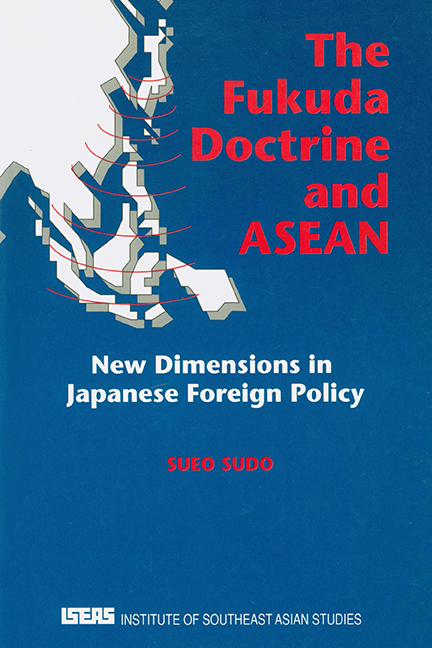Book contents
- Frontmatter
- Dedication
- Contents
- List of Tables
- Preface
- Abbreviations
- Introduction
- chapter one A Framework for Analysing Japanese Policy Towards Southeast Asia
- chapter two Post-war Japan's Re-entry into Southeast Asia
- chapter three Japan's Policy Towards Regional Development
- chapter four External Challenge and Changing Japan-Southeast Asia Relations; 1975–77
- chapter five A Changing Southeast Asia in Japanese Politics
- chapter six Formulating the First Doctrine in Japanese Foreign Policy
- chapter seven Japan's ASEAN Policy, 1977–87
- chapter eight Conclusion
- Appendices
- Bibliography
- Index
- THE AUTHOR
chapter one - A Framework for Analysing Japanese Policy Towards Southeast Asia
Published online by Cambridge University Press: 21 October 2015
- Frontmatter
- Dedication
- Contents
- List of Tables
- Preface
- Abbreviations
- Introduction
- chapter one A Framework for Analysing Japanese Policy Towards Southeast Asia
- chapter two Post-war Japan's Re-entry into Southeast Asia
- chapter three Japan's Policy Towards Regional Development
- chapter four External Challenge and Changing Japan-Southeast Asia Relations; 1975–77
- chapter five A Changing Southeast Asia in Japanese Politics
- chapter six Formulating the First Doctrine in Japanese Foreign Policy
- chapter seven Japan's ASEAN Policy, 1977–87
- chapter eight Conclusion
- Appendices
- Bibliography
- Index
- THE AUTHOR
Summary
Japanese foreign policy has been characterized as passive and reactive due to the inflexibility of its policy-making process and its heavy dependence upon the United States with which Japan concluded a bilateral security treaty at the end of the American occupation. Indeed, the relationship between Japan's political system and how decisions are actually made remains one of the most puzzling research questions. Furthermore, since at the time of its independence Japan was a war-torn country without any natural resources, the main goals of Japanese foreign policy were set for the promotion of economic development through obtaining raw materials and lucrative markets overseas. As a corollary, Japanese external behaviour has been regarded as “profit-mongering” and as dovetailing into U.S. foreign policy.
In the study of Japan's foreign relations; the Southeast Asian region has tended to be neglected or dealt with in the context of the Third World. This has been the predominant posture of the Western and U.S.-oriented foreign policy in Japan, so that whenever conflicts arose Western interests would prevail in Japanese foreign policy. At best, Southeast Asia is usually subsumed under the subcategory of greater Asian international relations, characterized by China's predominant role. When the importance of the region is focused it is always in tandem with the sea lanes through which Japan imports vital raw materials. Let us look more closely at how observers and scholars analyse Japan–Southeast Asia relations before presenting a framework of analysis in this book.
REVIEW OF THE LITERATURE
Turning to the analytical aspect of Japanese policy towards the region there seems to be a paucity of major works on the subject. In the literature on Japan–Southeast Asia relations; there are at least fifteen major works with approaches that may be grouped into three primary categories: study of a specific country or bilateral relations, specific dimension or issue, and a synoptic description. Of the fifteen works, although they are all solid, only five are based upon a specific framework or analytical concept.
- Type
- Chapter
- Information
- The Fukuda Doctrine and ASEANNew Dimensions in Japanese Foreign Policy, pp. 7 - 23Publisher: ISEAS–Yusof Ishak InstitutePrint publication year: 1992

